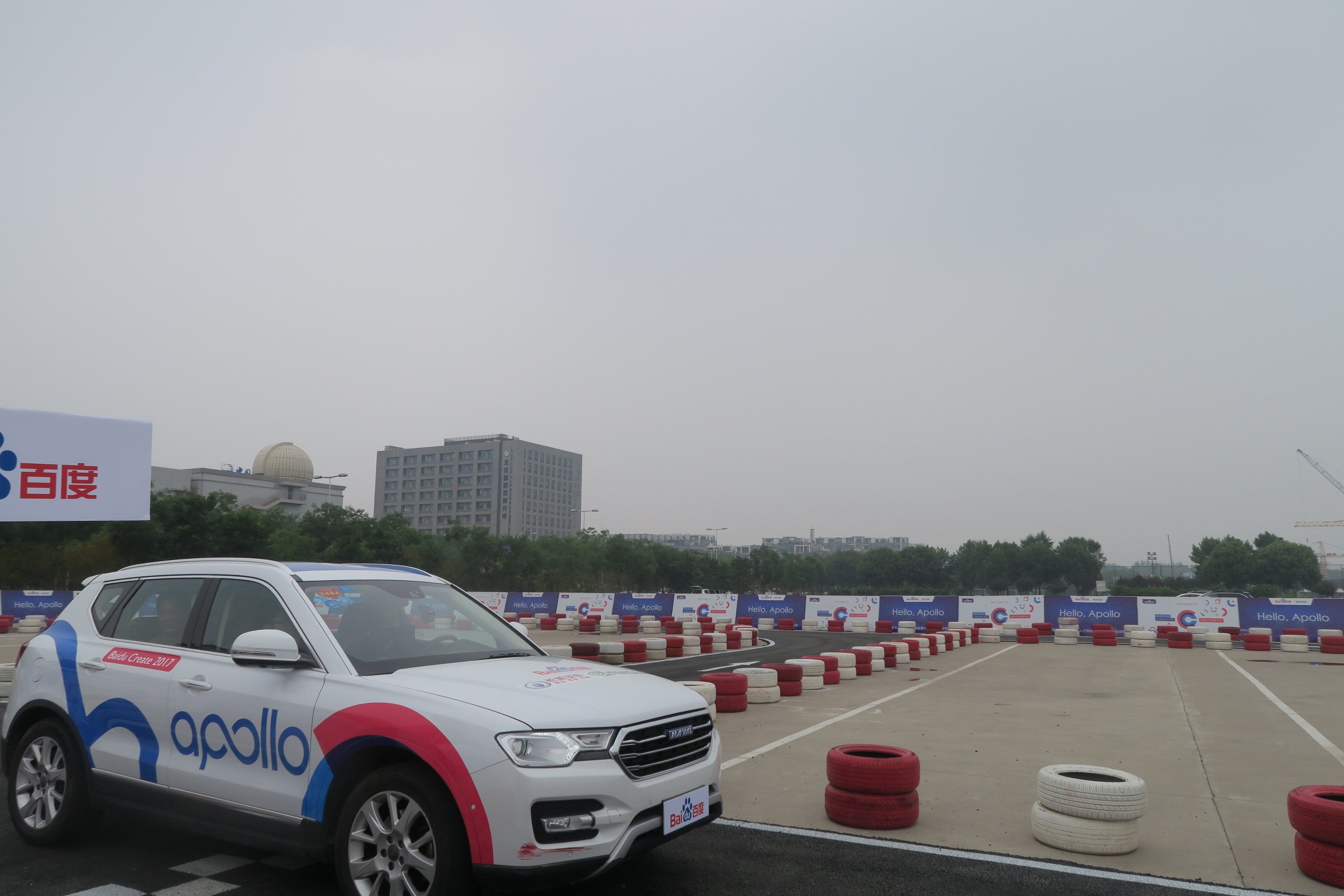
Teaching cars to drive in India will come with its own set of special pain points. Photo credit: Igor Ovsyannykov / Unsplash.
Driving in a new country can be nerve-wracking. You might have to switch sides on the road, disregard right-of-way, or even detour around runaway cattle. Eventually though, you adapt.
The question of regional driving differences may sound quaint to humans, but it poses a serious challenge to autonomous vehicles. Tech and automotive firms like Tesla and General Motors are all developing their own self-driving systems with the hopes of one day scaling them across the world. But the combined barriers of regional regulations and lack of access to local data could slow their expansion – and give local competition a leg-up.
“Self-driving car technologies, like environment perception and understanding road conditions, require local data,” said Cao Xudong, CEO of self-driving startup Momenta, at an investor event in Beijing earlier this month. To design a system that works well in China, for instance, you need Chinese data.
To design a system that works well in China, you need Chinese data.
Outside of China, going 60 miles per hour on a highway might be considered normal. “In Beijing, even going [25 miles per hour] is considered pretty good,” he explained, describing the country’s traffic-plagued capital. Other special characteristics, like pollution and driver behavior, can also impact a system’s accuracy.
That’s the challenge the autonomous driving industry is now facing, as Silicon Valley tech giants break out of their California test sites and into more chaotic driving environments. It’s kind of like learning how to run and crawl at the same time – to date, no company has developed a commercially viable, fully autonomous vehicle. Moving somewhere new isn’t the same as starting over, but given artificial intelligence’s dependence on enormous volumes of data, it won’t be trivial either.
“Most of the autonomous vehicle technology being developed today is geo-specific, making it difficult to expand to new cities with new rules and new driving behaviors to account for,” says Doug Parker, chief operating officer at self-driving startup NuTonomy, which was acquired for US$450 million by automotive tech firm Delphi last week.
“The premise [of deep learning] is that if you collect large amounts of data, then whenever a car is trying to make a decision you are very likely to have encountered a similar situation before,” he explains. “While this may work for highways, the reality is that urban driving is exponentially complex, and drivers – whether human or software – continually encounter unique situations.”
Quest for local data

Photo credit: NuTonomy.
The self-driving industry’s enormous appetite for data isn’t new. Indeed, it’s widely accepted that developing a safe, fully autonomous vehicle necessitates millions, if not billions, of miles in driving data. Google spin-off Waymo, which started working on self-driving technology in 2009, claims that it logs about 8 million miles per day inside its driving simulator Carcraft – in addition to real-world road tests.
However, in order to roll out self-driving vehicles across the world, the race for data will become more complex. Teaching a system to recognize trucks and cars is one thing, but what about tuk-tuks in Indonesia or daredevil scooter drivers in Vietnam? And cars won’t only have to see differently – they’ll have to adapt to different drivers and pedestrians too, whether it’s jaywalkers or aggressive New York City taxis.
Partnering across regions is one tactic. Chinese search giant Baidu, for instance, tied up with 50 different companies across the world, including Ford, Daimler, and ride-hailing firm Grab, through its open platform Apollo earlier this year. Data-sharing is a core part of the initiative.
Teaching a system to recognize trucks and cars is one thing, but what about tuk-tuks in Indonesia?
“In Apollo’s ecosystem, we respect a fair data policy. We encourage different partners to contribute data – the more they contribute, the more data and other resources they receive,” a Baidu spokesperson tells Tech in Asia.
The company is also building more “localized research teams” outside of its native China, such as a second research institute in the US, to prevent local competitors from getting the upper hand in accessing data, he explains.
Other companies, like Tesla, are using their own cars to scrape real-world data. Elon Musk’s electric vehicle firm has rolled out cars with Autopilot, its proprietary smart driver assistant system, in multiple countries, including the US and China. These cars collectively record and share data together through something Musk calls “fleet learning” (a term critics call a fancy word for crowdsourced mapping data).
Meanwhile, software-focused companies like Momenta are taking a hardware-lite approach by placing their own customized dash cams inside partners’ cars. In China, Momenta has deployed cameras and sensors across 1,000 cars from partnering car rental companies across about 10 cities.

Momenta’s stick-figure representations of pedestrians are used to read their posture and possible intentions. Image credit: Momenta.
Other companies are also rethinking the fundamental way that cars are taught to drive. NuTonomy, which has research teams in both Singapore and Boston, believes that one solution to scaling autonomous driving technology could be something called “formal methods.”
Instead of letting the system figure out how to drive via deep learning, formal methods let companies define their own hierarchical set of rules, like “don’t hit pedestrians,” which would have top priority. This gives cars the flexibility to break minor rules in order to preserve the most important ones – like avoiding human casualties.
“One of the strengths of its rules-based approach is that highly complex behaviors can be safely generated from a change or re-ordering of rules,” says Parker.”For example, in order to adapt to driving on the opposite side of the road in Boston, all we had to do was change the one rule governing which side of the road we drive on. We didn’t have to re-code or re-train our entire system.”
Location, location, location
Of course, technology is just one part of the self-driving scaling problem. Playing well with regulators across different locales will also affect global adoption.
In China, for instance, there are tight restrictions around high-definition (HD) mapping, which is crucial to autonomous driving systems. In order to create their own HD maps, companies have to first obtain a license from Chinese regulators.
Countries also vary in their support for autonomous driving. In India, for instance, the transport minister told reporters this year that he would not allow self-driving cars in the country in order to save jobs. Singapore, on the other hand, has dedicated an entire district called One North for testing self-driving cars.
In the US, California state regulators are trying to push their progressive policies on autonomous cars even further. Earlier this month, the state’s Department of Motor Vehicles proposed letting companies roll out self-driving cars without human drivers. There’s a reason why both domestic and foreign companies have flocked to California to set up self-driving initiatives.

One of Baidu’s test cars at an AI conference in July. Photo credit: Tech in Asia.
Varying attitudes toward self-driving technology from government officials could make a big difference in market adoption – especially since companies today have to start working with regulators before their product is even ready. If tech firms are barred from gathering local data and refining their systems, it’s hard to imagine them rolling out the best product for that country.
Conversely, governments that embrace autonomous driving could help their civilians reap the benefits of the technology sooner than other markets.
“The Singapore government has the most thorough and well-developed vision for how it wants to integrate autonomous vehicles into the urban mobility network,” says Parker, explaining why the MIT-spinoff company started developing self-driving technology in Singapore seven years ago. “In Singapore, we don’t worry about the government losing interest once the hype dissipates.”
The Southeast Asian city-state also has good weather, infrastructure, and reasonable traffic, he adds. For driverless cars, that helps too.
This post The self-driving industry has a scaling problem appeared first on Tech in Asia.
from Tech in Asia https://www.techinasia.com/self-driving-globalization-localization
via IFTTT
No comments:
Post a Comment